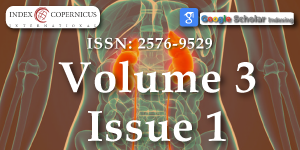Peritonitis: Culprit for peritoneal dialysis decline
Main Article Content
Abstract
Peritonitis is the main complication of peritoneal dialysis caused the withdrawal of treatment like peritoneal dialysis which was used as primary treatment modality few years back in Pakistan. With this motto to know the exact cause of peritonitis this retrospective study was done and 35 out of 42 pervious peritoneal dialysis patients who had peritonitis were analyzed using old data. A total of 57 bags of all these peritonitis patients were analyzed in department of microbiology during the year 2007-2011. Out of these bags positive culture was obtained from 42 bags (74%). Most of patients with positive culture were undergoing acute peritoneal dialysis 66.67% and rest were on chronic ambulatory peritoneal dialysis. Main concern was the yield of organisms causing culture positive peritonitis. It was found that bacterial peritonitis was positive in 80%, fungal peritonitis was 11% and mycobacterium tuberculosis peritonitis was 09%. Various culture techniques along with Gram Stain, Zeihl Nielsen Stain and Auramine stain were used for knowing the yield.
Limitations: Old and only small available data of peritonitis patients and stop of further peritoneal dialysis.
Article Details
Copyright (c) 2019 Kumar K, et al.

This work is licensed under a Creative Commons Attribution 4.0 International License.
The Journal of Clinical Nephrology is committed in making it easier for people to share and build upon the work of others while maintaining consistency with the rules of copyright. In order to use the Open Access paradigm to the maximum extent in true terms as free of charge online access along with usage right, we grant usage rights through the use of specific Creative Commons license.
License: Copyright © 2017 - 2025 |  Open Access by Journal of Clinical Nephrology is licensed under a Creative Commons Attribution 4.0 International License. Based on a work at Heighten Science Publications Inc.
Open Access by Journal of Clinical Nephrology is licensed under a Creative Commons Attribution 4.0 International License. Based on a work at Heighten Science Publications Inc.
With this license, the authors are allowed that after publishing with the journal, they can share their research by posting a free draft copy of their article to any repository or website.
Compliance 'CC BY' license helps in:
| Permission to read and download | ✓ |
| Permission to display in a repository | ✓ |
| Permission to translate | ✓ |
| Commercial uses of manuscript | ✓ |
'CC' stands for Creative Commons license. 'BY' symbolizes that users have provided attribution to the creator that the published manuscripts can be used or shared. This license allows for redistribution, commercial and non-commercial, as long as it is passed along unchanged and in whole, with credit to the author.
Please take in notification that Creative Commons user licenses are non-revocable. We recommend authors to check if their funding body requires a specific license.
Rao M, Juneja R, Shirly RB, Jacob CK. Hemodialysis for ESRD in Southern India—a perspective from a tertiary referral care center. Nephrol Dial Transplant. 1998; 13: 2494–2500. Ref.: http://tinyurl.com/yyqnfk3p
Hussain R, Tufail M, Naqvi SAJ. Continuous ambulatory peritoneal dialysis as a model of renal replacement therapy in children and adults—Pakistan experience. Indian Journal of Peritoneal Dialysis. 2006; 11: 10–13.
Abraham G, Mathew M, Padma G, Suresh S, Shroff S. Are three exchanges suitable for Asian patients on peritoneal dialysis? Perit Dial Int. 2003; 23 (Suppl 2): S45–47. Ref.: http://tinyurl.com/y6nu3w4f
Abraham G, Padma G, Matthew M, Shroff S. How to set up a peritoneal dialysis program: Indian experience. Perit Dial Int. 1999; 19 (Suppl 2): S184–186. Ref.: http://tinyurl.com/y69tmqyk
Samad MA, Iqbal S, Rashid HU. CAPD: experience in Bangladesh. Indian Journal of Peritoneal Dialysis. 2006; 10: 28–29. Ref.: http://tinyurl.com/y3yha8km
Dialysis Registry of Pakistan 2005-06. Karachi: The Kidney Foundation.
Kam-Tao Li P, Szeto CC, Piraino B, de Arteaga J, Fan S, et al. ISPD Peritonitis Recommendations: 2016 Update on Prevention and Treatment. Perit Dial Int. 2016; 36: 481-508. Ref.: http://tinyurl.com/y3lqcxlu
Liu FX, Gao X, Inglese G, Chuengsaman P, Pecoits-Filho R, et al. A Global Overview of the Impact of Peritoneal Dialysis First or Favored Policies: An Opinion. Perit Dial Int. 2015; 35: 406-420. Ref.: http://tinyurl.com/yxo53bzk
Ghali JR, Bannister KM, Brown FG, Rosman JB, Wiggins KJ, et al. Microbiology and outcomes of peritonitis in Australian Peritoneal dialysis patients. Perit Dial Int. 2011; 31: 651–662. Ref.: http://tinyurl.com/yytmzzj6
Pérez Fontan M, Rodríguez-Carmona A, García-Naveiro R, Rosales M, Villaverde P, et al. Peritonitis-related mortality in patients undergoing Chronic peritoneal dialysis. Perit Dial Int. 2005; 25: 274–284. Ref.: http://tinyurl.com/y4wdjq3g
Davenport A. Peritonitis remains the major clinical complication of peritoneal dialysis: the London, UK, peritonitis audit 2002-2003. Perit Dial Int. 2009; 29: 297–302. Ref.: http://tinyurl.com/yyd4qb2o

